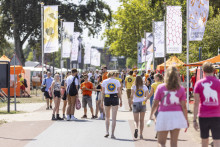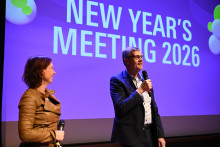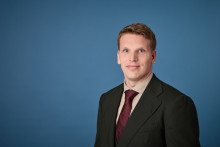This year, 60,000 students turned up for the start of the university Bachelor’s programmes, according to the latest figures. That represents 3,000 fewer than last year and over 5,000 fewer than in the peak COVID year 2020.
Gap year
The number of international students is still on the rise, the universities say, although the increase is less pronounced than before. The decline is mainly in the number of pre-university students. Around 70 to 75 percent of them generally go to university immediately after their final exam. This year that figure was only 66.7 percent.

Source: Universities of the Netherlands.
Some of the pre-university students are presumably taking a gap year. One of the possible reasons is that from September 2023 students will once again get a basic student grant, but not this year. Starting their studies a year later means one more year of basic student grant.
The opposite was the case eight years ago, because the basic student grant was due to be abolished in September 2015. More than 80 percent of Dutch pre-university students went straight to university after the final exam in the school year 2013/14.
Presumingly, there are also more students taking a gap year after their Bachelor’s courses, since there are slightly fewer enrolments for Master's programmes: 124,000, as opposed to 128,000 last year.
Language programmes
Small-scale language programmes continue to struggle. In Nijmegen, the Dutch language programme seems to be on the rise again, even though the numbers are still small, but the German language programme has attracted only six first-year students. ‘That’s a real tragedy’, said Rector Han van Krieken of Radboud University Nijmegen at an online meeting for journalists. ‘I’m extremely worried by it. Here we’re only a few kilometres from the German border.’
Geert ten Dam, President of the University of Amsterdam, confirmed that impression (‘There’s no stampede’), but believes that the revamping of the programmes will bear fruit. The German language programme in Amsterdam has been amalgamated with European studies, she said, so the programme is more appealing to youngsters. ‘It’s not only about German language and culture but also about European culture and the European Union.’
Total
All in all, the universities report that they still have as many students as last year. Although the intake of freshers is lower, roughly the same number of students are graduating.
There are, however, differences between the sectors. The only sector that is growing strongly is ‘nature’, with programmes like biology, chemistry and physics, as well as ICT and mathematics. These programmes have 40,000 enrolments so far (including upper-year students). That is twice as many as in 2011.
In addition, cross-sectoral studies are doing well. These are mixed programmes such as the Politics, Psychology, Law & Economics Bachelor’s programme in Amsterdam, which Crown Princess Amalia has chosen. The other sectors remain roughly the same or have declined slightly.
‘It’s likely that student numbers will start rising again in the years ahead’, says Pieter Duisenberg, President of Universities of the Netherlands. The universities are discussing the future with the Education Minister.
The final figures have not yet been issued. The official figures generally come out in February and may differ somewhat from the figures presented by the universities today, as a result of a raft of corrections.






